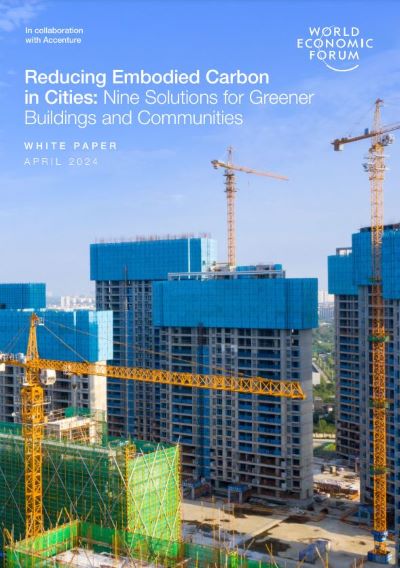
As cities grow in population and importance, urban construction will continue to gather pace. It is estimated that global floor area is expected to double by 2060, the equivalent of adding New York City every month for the next 40 years. This white paper highlights case studies and nine innovative solutions that provide models for cities seeking to meet sustainable development goals. Addressing the amount of carbon released due to new construction and infrastructure development, as well as the decommissioning of obsolete buildings, is critical to decarbonizing the built environment. Collectively referred to as “embodied carbon emissions”, this is the next frontier in mitigating climate change. The paper identifies common challenges cities face in the effort to reduce embodied carbon emissions and outlines best practices that have been developed and tested by pioneer cities, and which are are adaptable, scalable and designed to accelerate innovation across the construction industry. There are nine solutions. Solution 1 : Requirements for low-carbon materials Solution 2 : Mandates for whole-life carbon assessments Solution 3 : Executive orders for clean construction Solution 4 : Large-scale adaptive reuse Solution 5 : Citywide circular economy strategy Solution 6 : Programmes to electrify heavy transport and machinery Solution 7 : Innovation hub for clean construction Solution 8 : Programmes for residential deconstruction and workforce development Solution 9 : Online marketplace for a circular built environment
출처 : https://tinyurl.com/mrwzhyd6 첨부파일 : WEF_Reducing_Embodied_Carbon_in_Cities_2024.pdf
|